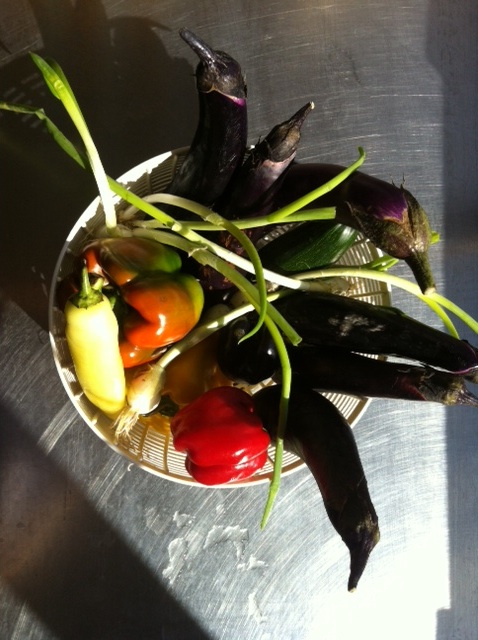If you ever get invited to my house for dinner, I should probably forewarn you that it’s likely you’ll be eating something that was once less-than-desirable-looking produce. We call it “Farmer Food” because it’s what the farmers eat that they cannot sell–the food with a hole or blemish or wrinkle, the week old (or older) stuff we stuck in our fridge and never got to before it started to rot. But wait, that’s not compost! My friend Robin was utterly disgusted one day when I cut the stinking, rotting half off an heirloom tomato and used the remainder in our salad a few years ago. Really, what’s the problem? Half of that huge, beautiful tomato was perfect.
Did anyone listen to the story on NPR a ways back about American’s absurdly high-level food waste due to our unrealistic expectations, excessively-high standards for produce and just plain ignorance? The statistics are pretty shocking and appalling, and we need to do our part to stop wasting our precious resources.
Listen to the story here (it’s not even three minutes), and then take a look in that veggie drawer and prepare to make the most delicious thing you’ve eaten all year…
I know everyone has a few stray veggies in there from previous weeks’ shares (perhaps you are waiting for them to rot enough so you can justify putting them in the compost?). Don’t be afraid of the wrinkles and brown spots, that mold can be rinsed or cut off. Even if it’s a vegetable you don’t really like, trust me, THIS is the answer.
I know, some of you are thinking, Umm, mold? Ick! But really, you’re going to cut it off, plus we’ll be cooking this forever in the oven, or on the grill. So collect all those items in a colander and give them a rinse.
As you can see here, this roast included several Asian eggplant, sweet and hot peppers, some scary green onions, and a zucchini. None of it looks particularly icky in this photo, but you can see a little mold on that eggplant below.
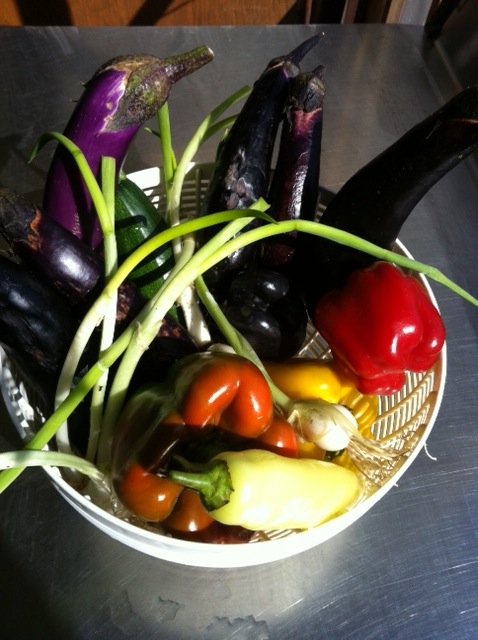
Rinse well, cut into course pieces, composting the super-grody parts, and place in a baking or grilling pan.
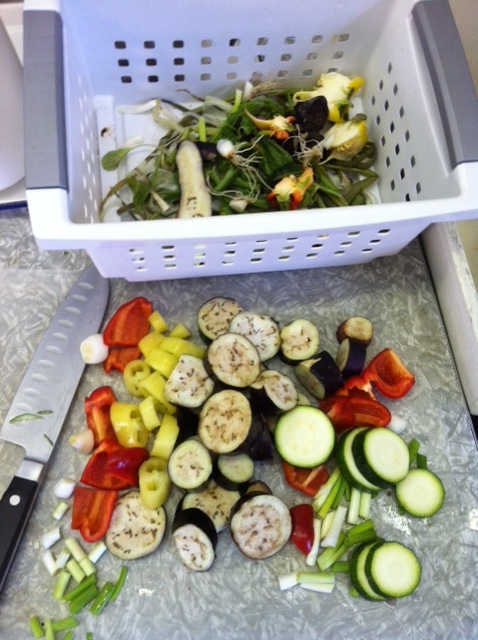
Toss with some olive oil and a generous sprinkle of black pepper and salt (but BEWARE–you are going to cook this way down, and if you over salt it, it may need to become a small part of a larger dish, like pasta or polenta). The addition of whole cloves of garlic and shallots will always improve this. Also splash in a little balsamic vinegar or soy sauce (again, beware of oversalting if you are adding soy sauce).
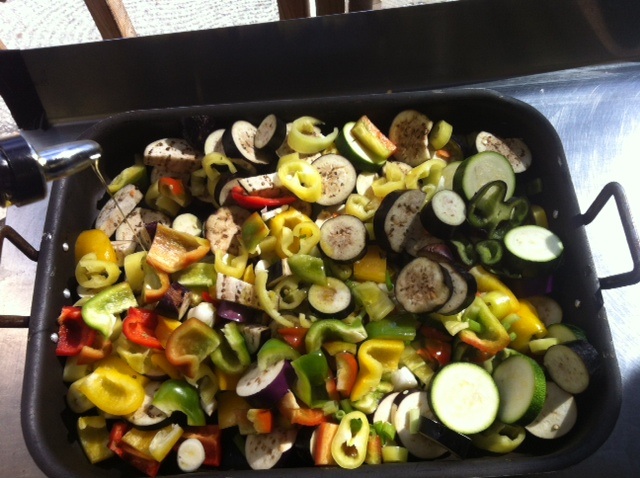
Bake in a hot oven…or grill.
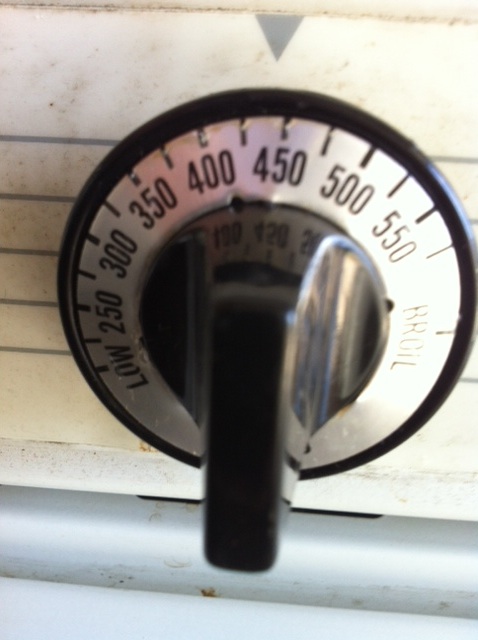
Stir every 20-30 minutes. If it’s cooking too fast (i.e. burning on the bottom), turn it down to 400F, or remove from direct fire on the grill.
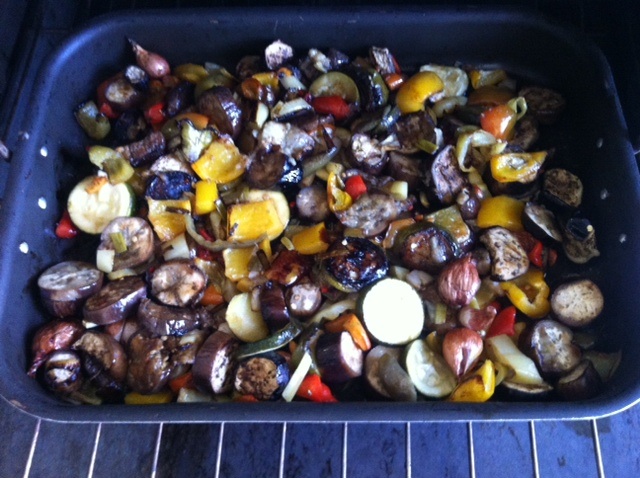
That looks to be about halfway there. You want the veggies to caramelize and sweeten up, so don’t be afraid to let them brown well.
After the next time you stir, add some chopped fresh herbs, like thyme, basil, rosemary or sage (don’t overdo it–a tablespoon or so will be great.
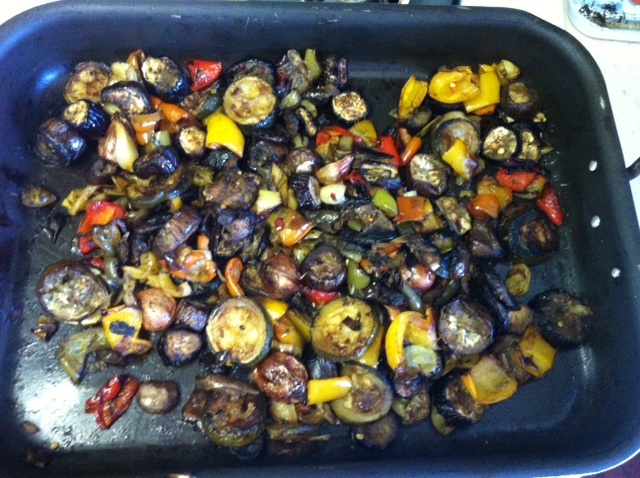
That looks about right. See how much it’s cooked down? This baked for about an hour and a half. It may take more or less time depending on what you include (e.g. tomatoes will take longer to cook off the juice before everything will start to caramelize).

Eat as a side dish or as a topping for pasta, rice or polenta, or serve it on bread with a slab of cheese. You can also puree some with a tiny bit of Greek yogurt or fresh chevre for a fabulous dip for crusty bread or cucumbers that EVERYONE will rave about. Or, freeze it for a taste of delicious summer produce in the winter.

